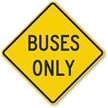How do Americans get around? Not by driving
A new study by U.S. PIRG and the Frontier Group has found that in 99 out of the country’s top 100 regions, fewer people commuted to work in a private vehicle in 2010, as compared to 2000.
These regions contain over half the US population, and are key to the US economy. More people are taking the bus and biking to work in these areas. “Instead of wasting taxpayer dollars continuing to enlarge our grandfather’s Interstate Highway System,” says Phineas Baxandall of US PIRG, “we should invest in the kinds of transportation options that the public increasingly favors.”
New York City led the regions that saw a drop in commuters using personal cars. There was a 4.8% drop in the proportion of workers traveling to work in private vehicles or cars here, from 2000 to 2007-11.
Public transit use and bike commuting on the rise
There has also been an increase in public transit use in most of the 100 most populous regions in the U.S. In 98 of these regions, there was a 7.1% increase in the number of passenger miles traveled per capita on public transit between 2005 and 2010.

More Americans bike to work. Image by Richard Masoner/Cyclelicious
Another means of transport that has seen an increase: biking. (Unsurprisingly, Portland was at the top of the biking list – it saw a 1.7% increase in workers who biked to work, from 2000 to 2007-2011.)
Economic downturn has nothing to do with Americans driving less
Experts believe the decline in driving has not resulted due to variations in the economy. Baxandall says, “If this was really something produced by the economy, you would expect the cities with the biggest reductions in driving to have the biggest increases in unemployment and poverty. But you find just the opposite. The cities that had the biggest decreases in driving were hit less hard by the economic downturn.”
Government agencies need to re-evaluate transportation measures
The study recommends that government agencies revisit transportation plans. With a decline in car usage, it may be necessary to reallocate resources. Highway projects, which were approved on the assumption that car usage would go up, may need rethinking.
The outlier in the study was New Orleans. For a good part of the period covered by the study, the city was feeling the aftereffects of Hurricane Katrina. New Orleans saw a 22% decline in Vehicle Miles Traveled (VMT) per capita from 2006 to 2011, the highest among the regions surveyed.
New Orleans has also seen a drop in car ownership and a rise in use of public transit, but more people are driving to work now over there than they were in 2000. “In addition to the storm and the exodus, there are the aid workers, many of whom don’t own their own cars and travel long distances because of housing shortages at the city,” says Baxandall.



















Comments (1)
Sites That Link to this Post